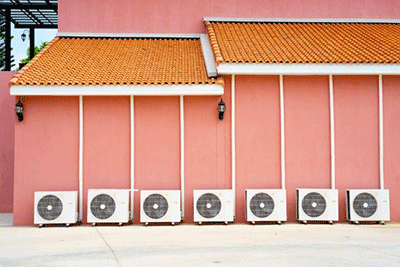R410A alternatives key to phase down
2nd November 2015 DUBAI: EPEE has identified a switch away from R410A in split air conditioners as one of the keys to achieving the targets set under the F-gas phase down timetable.
DUBAI: EPEE has identified a switch away from R410A in split air conditioners as one of the keys to achieving the targets set under the F-gas phase down timetable.
Although the current European F-gas phase down only bans refrigerants with a GWP of 750 or more in single split air conditioning systems from January 1, 2025, EPEE has recognised a switch from R410A to R32 and HFC/HFO blends in new equipment as a key element of a successful phase down.
This is one of the elements of the Gapometer, a new tool that EPEE is developing to measure compliance and progress in the phase down of HFCs under EU F-gas rules.
The Gapometer concept was presented to attendees at a workshop organised yesterday at the 27th Meeting of the Parties to the Montreal Protocol in Dubai.
EPEE says the Gapometer aims to define a route towards a successful phase down of HFCs in Europe and will identify the biggest risks of gaps between required and actual progress.
Aware of the “cliff” – the large HFC cut in 2018 – EPEE maintains that a successful and relatively painless phase down will only be achieved if a number of key actions are taken. In addition to significant efforts to reduce leakage and make full use of reclaimed refrigerant, EPEE also calls for an early switch from R404A to lower GWP alternatives and the retrofit of R404A systems affected by the service ban.
According to EPEE, 50% of supermarket packs need to be retrofitted by the end 2017 if the phase down is to remain on track. It also spotlights the need to reduce average leakage rates from commercial refrigeration to below 10% by 2018.
Andrea Voigt, director general of EPEE, said: “EPEE is very much committed to supporting the implementation of the EU F-Gas Regulation and its ambitious phase-down objectives. This is why the Gapometer is so important, as it shows what needs to be done to achieve the phase down goals and identifies potential pitfalls -and opportunities – across Europe.”
The event also included an intervention from Paul de Larminat, Johnson Controls, who introduced the work of EPEE’s Low Emission Task Force which is overseeing the project.
Mr de Larminat said: “As EPEE members we want to ensure that the F-gas regulation – and the phase down in particular – is properly adhered to by EU member states. The Gapometer can play a crucial role in this regard.”
The audience included industry representatives, associations, and policy-makers from across the world, all of whom were given the opportunity to find out more about the EU-F-gas regulation and what it requires.
Ms Voigt concluded: “The F-gas regulation is applicable in Europe, but actually it will have far-reaching consequences for international companies who will need to abide by its provisions when operating in Europe.”
“It seems as well that other jurisdictions are following the EU’s lead and planning a similar approach to tackling F-Gas emissions. This is what makes the EU context so interesting and relevant, and this is why EPEE is investing so much time and resources into informing our international colleagues of the current situation.”







